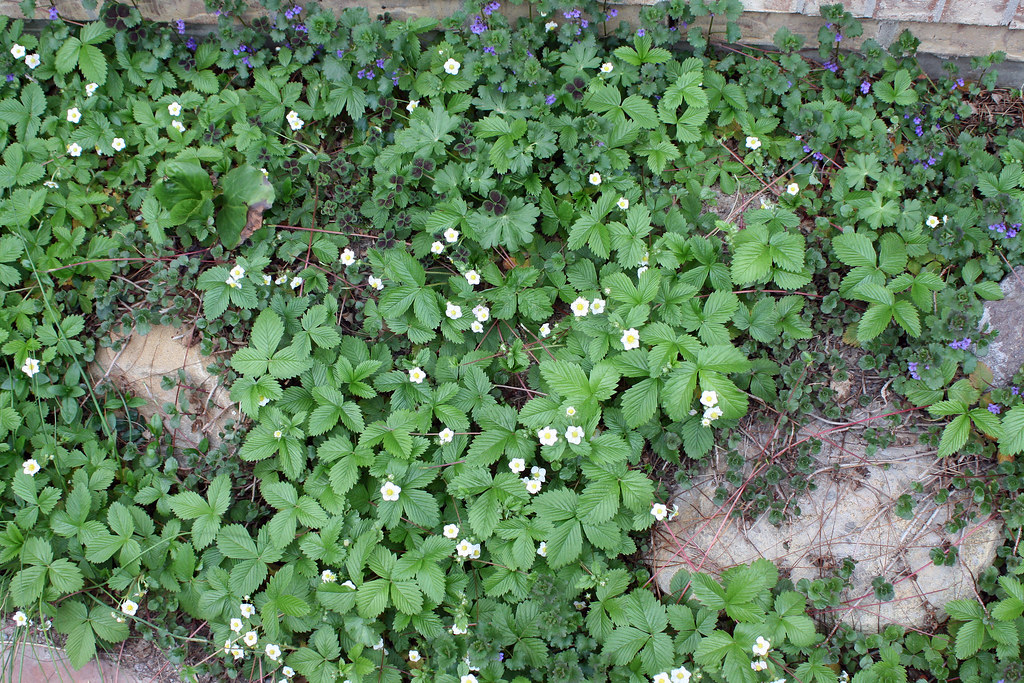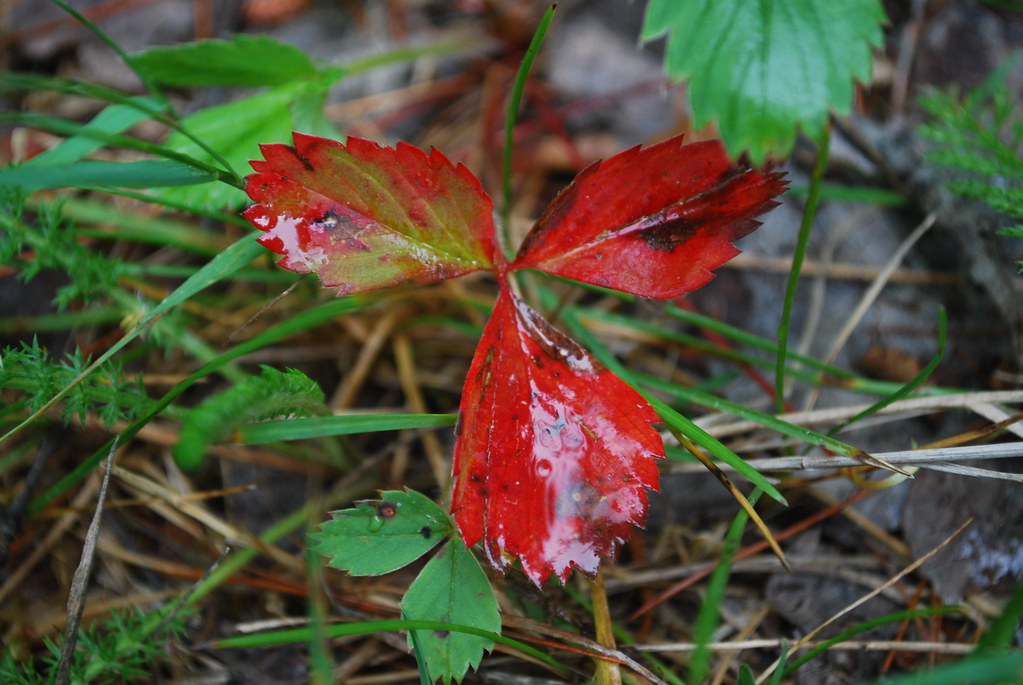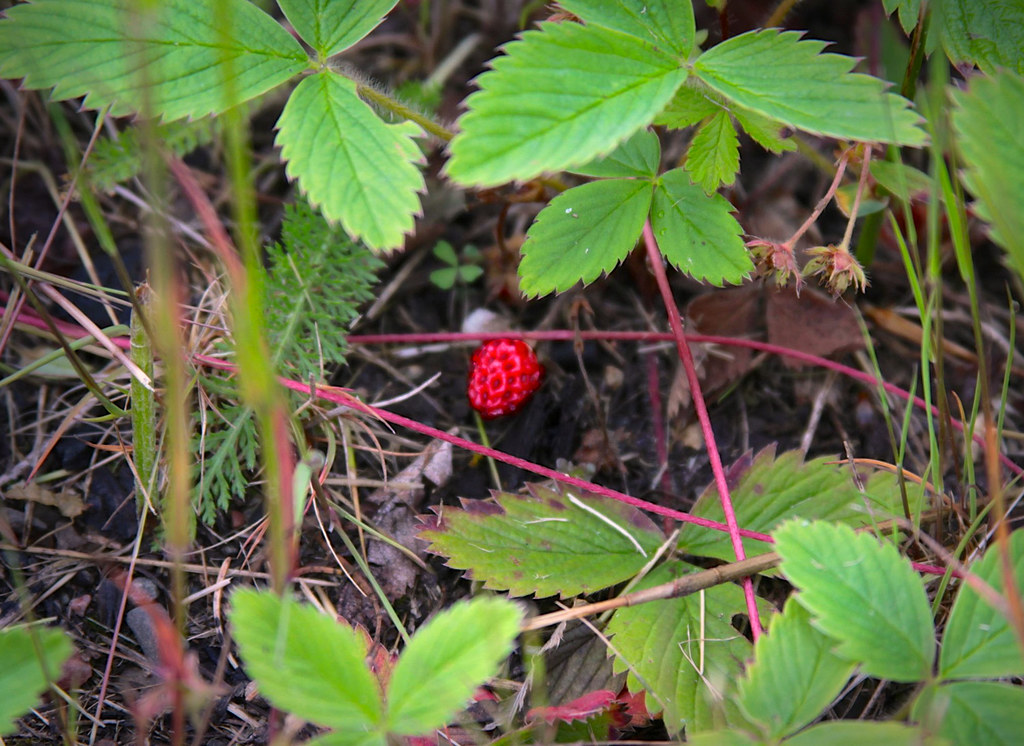 |
| Wild strawberry (Fragaria virginiana) doing what it does best - covering ground. Photo by Patrick Standish |
I thought that I had it all figured out.
But that's what gardening is good at -- Just when you're feeling cocky, it pulls the rug out and shows you who's boss.
At first, I thought wild strawberry (Fragaria virginiana) would be the answer to my prayers. I've been searching for a tough groundcover (ideally native) that would cover all the bare dirt in my beds, block weeds and provide a beautiful green backdrop for all the other perennials, shrubs and trees in the garden.
Wild strawberry definitely excels in the fast groundcover category - like 10-feet-in-every-direction-in-a-single-season fast.
 |
| I will admit that wild strawberry foliage can display some excellent, vibrant colors in fall and winter. Photo by Joshua Mayer |
Of course, I should have known better.
Just like canopy trees planted next to a house foundation don't stop growing when they hit 10-feet tall, a rampant groundcover doesn't stop expanding when it hits the end of a bed.
In the case of a plant like wild strawberry that throws out long above-ground stolons, it just starts gunning for the lawn or sprawling onto the patio, the sidewalk, the driveway, etc.
Once I realized it would be a daily (hourly?) chore to keep it in bounds, I decided to remove it. Since then, I've spent hours and hours trying to evict wild strawberry from the garden.
I know it's a native here (though I don't remember ever seeing it in the wild). And it's probably a lovely plant in the right circumstances, but I just couldn't keep up with it here.
 |
| The wild strawberry fruit is tiny (compared to the typical commercialized hybrid berry that you find at a grocery store, farmers market or pick-your-own farm). Notice all the wiry, red stolons that connect the strawberry plantlets. Photo by espie (on and off) |
For those who are wondering, it also didn't yield much fruit. A chipmunk (or chipmunks) got most of the fruit it did produce. And contrary to the rhapsodies you find on the Internet, I did not find the taste of wild strawberry fruit particularly impressive. In fact, I'd say that market hybrid strawberries are much sweeter and juicier. But I might have picked my wild strawberry too soon. I was pretty sure that if I waited another day or two, a critter would beat me to the punch and I wouldn't get to taste it at all.
So where does this leave me in terms of groundcovers?
I'm still trialing a few spreaders:
- Erigeron pulchellus (rose petty)
- Epimedium x perralchicum 'Frohnleiten'
- Packera obovata (golden groundsel)
- Asarum canadense (wild ginger)
and
- Coelestinum conoclinium (blue mistflower).
I'm also thinking about certain reseeding, clumping plants as groundcovers in their own right. Plants like
- Agastache foeniculum
- Baptisia australis
- Gaillardia x grandiflora
and
- Platycodon grandiflorus)
And a couple of woodies:
- Cephalotaxus harringtonia 'Prostrata'
and
Juniperus virginiana 'Grey Owl'
I know some readers might feel that I'm too picky, that I want it all. Can't I just give up this wild goose chase and blanket my beds in wood chips, compost or pine straw like everyone else?
Nope. Not yet. I haven't given up hope quite yet.
